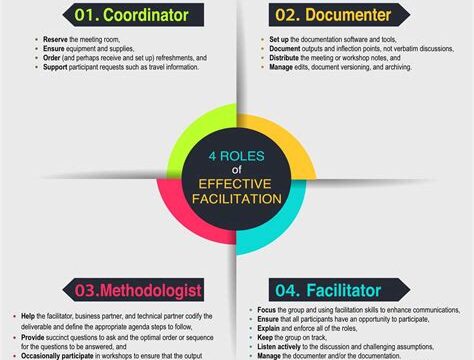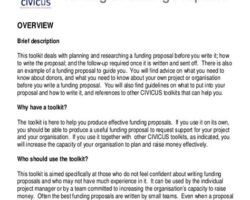Setting Clear Objectives for the Workshop
Setting clear objectives for a workshop is crucial in ensuring its success. Objectives help guide the planning process and provide a clear focus for both the facilitator and the participants. By outlining what you want to achieve, you can tailor the content and activities to meet those specific goals. Additionally, clear objectives help participants understand the purpose of the workshop and what they can expect to gain from it.
When setting objectives for a workshop, it is important to make them specific, measurable, achievable, relevant, and time-bound (SMART). This helps ensure that the objectives are realistic and attainable within the given time frame. For example, instead of setting a general objective like “improving communication skills,” a SMART objective could be “By the end of the workshop, participants will be able to effectively communicate their ideas in a group setting through active listening and assertive communication techniques.”
Creating a list of objectives can also be helpful in organizing the workshop content. By breaking down the main goals into smaller, manageable objectives, you can design activities and exercises that align with each objective. This not only helps keep the workshop focused but also provides a clear structure for both the facilitator and the participants.
Objectives:
- Increase participants’ awareness of effective communication techniques
- Enhance participants’ active listening skills
- Develop participants’ assertive communication skills
- Provide practical strategies for effective group communication
Table: Workshop Schedule
| Time | Activity |
|---|---|
| 9:00 AM – 9:30 AM | Introduction to effective communication |
| 9:30 AM – 10:00 AM | Activity: Listening skills exercise |
| 10:00 AM – 11:00 AM | Workshop: Assertive communication techniques |
| 11:00 AM – 12:00 PM | Group discussion and practice |
In conclusion, setting clear objectives for a workshop is essential in providing a focused and purposeful learning experience. By using SMART objectives and breaking them down into smaller, manageable goals, facilitators can design activities and exercises that align with each objective. This not only helps participants understand the purpose of the workshop but also increases their chances of achieving the desired outcomes. So, the next time you plan a workshop, take the time to set clear objectives, and watch as your participants engage and benefit from the experience.
Designing Engaging Activities and Exercises
When planning a workshop or training session, one of the key factors to consider is how to keep participants engaged and motivated. This is where the design of activities and exercises plays a crucial role. By incorporating interactive and stimulating elements, you can create an environment that promotes active learning and enhances the overall experience for participants.
One effective way to design engaging activities is to incorporate real-life scenarios or case studies. This allows participants to apply their knowledge and skills in practical situations, making the learning process more meaningful and relevant. Additionally, using hands-on activities, such as group discussions, role-plays, or problem-solving exercises, fosters active participation and encourages critical thinking.
Incorporating multimedia tools and visual aids can also enhance the engagement level of participants. These tools help to present information in a more comprehensive and dynamic manner, catering to different learning styles. Whether it’s through PowerPoint presentations, videos, or interactive online platforms, the use of multimedia can make the learning experience more interactive and enriching.
- Real-life scenarios or case studies
- Hands-on activities like group discussions, role-plays, or problem-solving exercises
- Multimedia tools and visual aids such as PowerPoint presentations, videos, or interactive online platforms
| Benefits | Examples |
|---|---|
| Enhances active learning | Applying knowledge in real-life scenarios |
| Encourages critical thinking | Engaging in group discussions or problem-solving exercises |
| Caters to different learning styles | Using visual aids and multimedia tools |
Creating a Welcoming and Inclusive Environment
Creating a welcoming and inclusive environment is crucial for any workshop or event. It is important to foster an atmosphere where every participant feels valued and respected. To achieve this, there are several key strategies that can be implemented.
Firstly, it is essential to set the tone from the beginning. Greeting participants with a warm welcome and introducing yourself helps to establish a friendly and approachable atmosphere. Use inclusive language and avoid any assumptions about participants’ backgrounds or experiences.
Secondly, promoting active listening and open communication is vital. Encourage participants to actively listen to one another without interrupting or judging. Foster an environment where everyone’s opinions and contributions are valued, regardless of their level of experience or expertise.
- Ensure that everyone has an opportunity to speak and be heard during discussions.
- Provide opportunities for participants to ask questions and engage in dialogue.
- Educate participants on the importance of respecting and considering diverse perspectives.
Remember, diversity goes beyond race and gender. It also encompasses differences in age, nationality, abilities, and more. Acknowledge and celebrate this diversity, as it enriches the learning experience for everyone involved.
| Benefits of Creating a Welcoming and Inclusive Environment |
|---|
| 1. Encourages collaboration and teamwork |
| 2. Enhances creativity and innovation through diverse perspectives |
| 3. Fosters mutual respect and empathy among participants |
| 4. Increases engagement and active participation |
In conclusion, creating a welcoming and inclusive environment for your workshop is essential for fostering a positive and enriching learning experience. By setting the right tone, promoting active listening, and celebrating diversity, you can ensure that every participant feels valued and respected. Not only will this improve the overall workshop experience, but it will also create an environment where participants can truly thrive and grow.
Using Visual Aids and Multimedia Tools
When it comes to conducting workshops or training sessions, one of the most effective ways to engage participants and enhance their learning experience is by using visual aids and multimedia tools. Visual aids such as charts, graphs, diagrams, and images can help clarify complex concepts and make the content more accessible and easily understandable. Similarly, multimedia tools like videos, slideshows, and interactive presentations can add an interactive and dynamic element to the session, keeping the participants interested and involved.
Visual aids and multimedia tools not only make the content more visually appealing but also help in retaining information. According to research, people tend to remember information better when it is presented in a visual format. By incorporating visuals into your workshop, you can reinforce key points, illustrate examples, and create a memorable learning experience for the participants.
One of the key advantages of using visual aids and multimedia tools is their ability to cater to different learning styles. People have different preferences when it comes to learning – some are visual learners, while others are auditory or kinesthetic learners. By incorporating visual aids and multimedia, you can accommodate these different learning styles and ensure that all participants can effectively grasp and retain the information being presented.
Benefits of using Visual Aids and Multimedia Tools:
1. Enhance comprehension and understanding: Visual aids and multimedia tools can simplify complex concepts and make them easier to comprehend. They can help participants visualize abstract ideas and make connections between different pieces of information.
2. Increase engagement and interest: Visuals are inherently attention-grabbing and can stimulate curiosity and interest among participants. By using multimedia tools, you can create an engaging and interactive learning environment that encourages active participation and discussion.
3. Facilitate information retention: Visuals are known to enhance memory retention. By incorporating visual aids and multimedia tools, you can help participants remember and recall the information presented during the workshop more effectively.
| Visual Aids | Multimedia Tools |
|---|---|
| Charts | Videos |
| Graphs | Slideshows |
| Diagrams | Interactive Presentations |
| Images |
In conclusion, incorporating visual aids and multimedia tools into your workshops or training sessions can greatly enhance engagement, comprehension, and information retention. By appealing to different learning styles and making the content more visually appealing, you can create a welcoming and inclusive environment that promotes active participation and discussion. So, the next time you conduct a workshop, don’t forget to leverage the power of visual aids and multimedia tools to make your session more impactful and effective.
Encouraging Active Participation and Discussion
In order to create a successful workshop, it is crucial to encourage active participation and discussion among the participants. This not only promotes a deeper understanding of the topic being discussed, but also fosters a collaborative and inclusive learning environment.
One effective way to encourage active participation is to establish clear expectations from the beginning. By setting clear objectives for the workshop, participants will have a better understanding of the purpose and goals of the activities and discussions. This helps to create a sense of purpose and engagement, as participants know what is expected of them.
In addition to setting clear objectives, it is important to design engaging activities and exercises that stimulate discussion. These activities should be relevant to the topic at hand and should encourage participants to think critically and share their insights. By incorporating interactive elements such as group discussions, role-playing, or case studies, participants are more likely to actively engage with the material and each other.
Creating a welcoming and inclusive environment is another key aspect of encouraging active participation and discussion. It is important to ensure that all participants feel comfortable and valued, regardless of their background or experiences. This can be achieved by establishing ground rules for respectful communication, actively listening to participants’ opinions, and creating opportunities for everyone to contribute their ideas. By fostering a safe and inclusive space, participants are more likely to feel empowered to actively participate in discussions.
Using visual aids and multimedia tools is another effective way to encourage active participation and discussion. Visual aids such as slides, diagrams, or videos can help to illustrate complex concepts and facilitate understanding. Additionally, multimedia tools such as polling software or online collaboration platforms can be used to encourage active participation and gather feedback from participants. By incorporating various visual and interactive elements, participants are more likely to stay engaged and actively contribute to the discussion.
Providing timely and constructive feedback is important for encouraging active participation and discussion. It is important to acknowledge and validate participants’ contributions, while also providing constructive criticism when necessary. This helps to promote a growth mindset and encourages participants to continue actively engaging with the material and sharing their perspectives.
In order to facilitate effective group dynamics, it is important to create opportunities for collaboration and teamwork. By assigning group activities or projects, participants are encouraged to work together, share ideas, and engage in meaningful discussions. This not only fosters a sense of camaraderie among participants, but also promotes active participation and the exchange of diverse perspectives.
In conclusion, encouraging active participation and discussion is essential for creating a successful workshop. By setting clear objectives, designing engaging activities, creating a welcoming environment, using visual aids and multimedia tools, providing timely feedback, and facilitating effective group dynamics, workshop facilitators can create an inclusive and collaborative learning experience for all participants.
Providing Timely and Constructive Feedback
When it comes to facilitating a workshop or training session, one of the most important aspects is providing timely and constructive feedback. Feedback plays a crucial role in helping participants understand their strengths and areas for improvement, and it allows them to make necessary adjustments to their learning process. In this blog post, we will explore the significance of providing timely and constructive feedback in a workshop setting and discuss some best practices to ensure its effectiveness.
Feedback that is provided in a timely manner holds greater value and impact. When participants receive feedback immediately after completing an activity or exercise, it is fresh in their minds, and they can easily connect it to their performance. This enables them to reflect on their actions and behaviors, understand the consequences, and make necessary improvements for future sessions. On the other hand, delayed feedback may lose its relevance and may not have the same impact on the participants’ learning process.
Constructive feedback is feedback that focuses on guiding participants towards improvement rather than simply pointing out their mistakes. It should highlight both their strengths and areas for development, providing specific and actionable suggestions. Constructive feedback should be specific, indicating exactly what was done well and areas that need improvement. Additionally, it should be actionable, offering suggestions on how to enhance performance in the identified areas. This form of feedback encourages participants to take ownership of their learning and motivates them to work towards self-improvement.
One effective way to provide timely and constructive feedback is through the use of visual aids and multimedia tools. These tools can help enhance the clarity and understanding of the feedback being provided. For example, using a table to present a list of strengths and areas for improvement can make the feedback more organized and easily digestible for participants. Similarly, incorporating visual aids such as graphs or charts can help illustrate progress and areas of focus. By utilizing these tools, the feedback becomes more engaging and memorable for the participants, increasing their chances of effectively implementing the suggested improvements.
In conclusion, providing timely and constructive feedback is essential for the success of a workshop or training session. It enables participants to reflect on their performance, understand their strengths and areas for improvement, and take necessary actions to enhance their learning process. By providing feedback in a timely manner and using constructive techniques, facilitators can help participants grow and develop throughout the workshop. Using visual aids and multimedia tools can further enhance the impact of the feedback, making it more engaging and memorable. Overall, effective feedback fosters a positive learning environment and supports participants in their journey of continuous improvement.
Facilitating Effective Group Dynamics
When it comes to facilitating effective group dynamics, there are several important factors to consider. Group dynamics refers to the interactions and relationships among individuals within a group, and how these interactions affect the overall functioning and productivity of the group. It is crucial for a facilitator to create an environment where individuals can work together collaboratively, communicate effectively, and feel comfortable expressing their ideas and opinions. In this blog post, we will explore some strategies and techniques that can help in facilitating effective group dynamics.
One key aspect of facilitating effective group dynamics is setting clear objectives for the group. It is important for the facilitator to clearly define the purpose and goals of the group, as well as communicate these objectives to the participants. This helps to create a shared understanding among the group members and keeps everyone focused on the task at hand. Setting clear objectives also helps in guiding the discussions and activities throughout the workshop, ensuring that the group stays on track and makes progress towards achieving their goals.
Another important factor in facilitating effective group dynamics is designing engaging activities and exercises. Engaging activities help to capture the interest and attention of the participants, while also promoting active participation and collaboration. The facilitator should come up with activities and exercises that are relevant to the objectives of the workshop, and that encourage group members to think critically, share their ideas, and work together towards finding solutions. This can include brainstorming sessions, group discussions, role-playing exercises, or hands-on activities.
Frequently Asked Questions
Q: How can setting clear objectives for a workshop help ensure its success?
A: Setting clear objectives helps provide direction and focus for the workshop. It allows participants to understand what they will be learning or achieving, and helps the facilitator structure the content and activities accordingly.
Q: What are some examples of engaging activities and exercises that can be used in a workshop?
A: Engaging activities and exercises can include interactive group discussions, role-playing scenarios, problem-solving exercises, case studies, hands-on demonstrations, and interactive games. These activities help stimulate participants’ interest and encourage active learning.
Q: How can a facilitator create a welcoming and inclusive environment in a workshop?
A: A facilitator can create a welcoming and inclusive environment by establishing and communicating clear guidelines for participation, respecting and valuing diverse perspectives, promoting active listening and participation, encouraging collaboration and teamwork, and addressing any instances of discrimination or exclusion.
Q: What are the benefits of using visual aids and multimedia tools in a workshop?
A: Using visual aids and multimedia tools helps enhance participants’ understanding and retention of information, makes the content more engaging and memorable, and caters to different learning styles. It can include the use of slides, videos, infographics, charts, diagrams, and interactive online resources.
Q: How can a facilitator encourage active participation and discussion in a workshop?
A: A facilitator can encourage active participation and discussion by creating a safe and non-judgmental space for sharing ideas, asking open-ended questions, using ice-breakers and energizers to warm up participants, acknowledging and valuing different perspectives, and actively involving participants in activities and group discussions.
Q: Why is providing timely and constructive feedback important in a workshop?
A: Providing timely and constructive feedback helps participants understand their progress, strengths, and areas for improvement. It motivates them to continue learning and growing, reinforces positive behaviors and outcomes, and helps the facilitator gauge the effectiveness of the workshop and make necessary adjustments.
Q: How can a facilitator facilitate effective group dynamics during a workshop?
A: A facilitator can facilitate effective group dynamics by establishing clear communication channels, encouraging active listening and respect among participants, facilitating opportunities for collaboration and teamwork, managing conflicts and disagreements constructively, and fostering a positive and inclusive group atmosphere.





